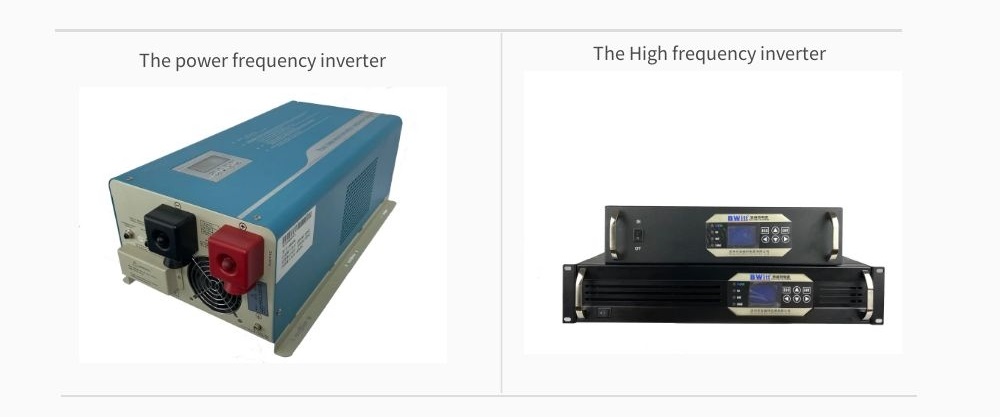
An inverter is a device that converts direct current (DC) into alternating current (AC) to meet the power demand of AC loads. According to the topology, inverters can be divided into high frequency inverters and power frequency inverters.
Because the high-frequency inverter uses a small, light-weight high-frequency magnetic core material, the power density of the circuit is greatly increased, so that the no-load loss of the inverter power supply is small, and the inverter efficiency is improved. Generally, high-frequency inverters used in small and medium-sized PVS have a peak conversion efficiency of more than 90%.
Power frequency inverter
The power frequency inverter first inverts the DC power into a power frequency low-voltage AC power, and then boosts it into a 220V, 50Hz AC power for the load through a power frequency transformer.
Its advantage is that the structure is simple, and various protection functions can be realized under lower voltage. Because there is a power frequency transformer between the inverter power supply and the load, the inverter runs stable and reliable, has strong overload capacity and shock resistance, and can suppress high-order harmonic components in the waveform. However, the power frequency transformer also has the problem of being bulky and expensive, and its efficiency is relatively low. The small power frequency inverter manufactured according to the current level, its rated load efficiency generally does not exceed 90%. At the same time, the iron loss of the power frequency transformer is basically unchanged when the power frequency transformer is running under full load and light load, so it can run under light load. The no-load loss is larger and the efficiency is lower.
Weight comparison of high frequency inverter and power frequency inverter
Power frequency inverters of the same power are much heavier than high-frequency inverters. High-frequency inverters are small in size, light in weight, high in efficiency, and low in no-load load, but they cannot be connected to full-load inductive loads, and Poor overload capacity.

Comparison of working principle of high frequency inverter and power frequency inverter
The high frequency inverter circuit is more complicated, and the high frequency inverter usually consists of IGBT high frequency rectifier, battery converter, inverter and bypass. The IGBT can be turned on and off by controlling the drive added to the gate. The switching frequency of the IGBT rectifier is usually from several kilohertz to tens of kilohertz, or even as high as hundreds of kilohertz, which is much higher than that of industrial frequency inverters. Therefore it is called a high frequency inverter.
The power frequency inverter is designed based on the traditional analog circuit principle and consists of a thyristor (SCR) rectifier, an IGBT inverter, a bypass and a power frequency step-up isolation transformer. Because the working frequency of its rectifier and transformer are both 50Hz power frequency, it is called power frequency inverter as the name suggests.
Comparison of conversion efficiency between high frequency inverter and industrial frequency inverter
The power frequency inverter has no high conversion efficiency than the high frequency inverter, because the complicated hardware simulation circuit is burned into the microprocessor, and the operation of the inverter is controlled in the form of a software program. In addition to greatly reducing the size of the high-frequency inverter, its conversion efficiency is also improved.
